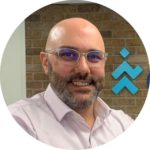Shifting the perspective on SPM: a team-focused approach
In recent years, the landscape of portfolio management has undergone a significant transformation. Traditionally, portfolio management systems and Project Management Offices (PMOs) have been heavily centered around a “command and control” approach. This model prioritized roll-up status reports, focused on executive stakeholder management, and decision-making processes primarily driven by funding considerations. However, this traditional approach often resulted in rigid structures that stifled innovation and responsiveness within organizations.
A paradigm shift has been taking place, moving away from this top-down governing body towards a more fluid and dynamic portfolio management structure that functions as an enabler rather than a controller. This shift has been pivotal in enhancing organizational effectiveness and adaptability in a rapidly changing business environment.
One of the key elements of this transformation is the focus on providing “Context” and “Competency,” leading to empowerment rather than governance, based on L. David Marquet’s book Turn the Ship Around!. This approach is not about overseeing and controlling every detail but about equipping and enabling the organization to excel and innovate independently.
Context
The first critical change is the provision of context. It’s vital for every member of an organization to understand how the company generates revenue. This encompasses a deep comprehension of the company’s pricing strategies and overall business goals. By providing this level of transparency, organizations foster a shared sense of purpose and direction.
Moreover, ensuring there are effective two-way communication channels is essential for aligning organizational goals. Methods such as Sprint Demos have proven effective. These are not just presentations but interactive sessions where feedback flows both ways, ensuring everyone understands and aligns with the organizational objectives.
Competency
Competency involves understanding the unique purpose and structure of each team within the organization. This understanding is based on team topologies, which dictate how teams are structured and interact. It’s crucial to provide teams not only with a clear purpose but also with the tools and practices that are best suited to their specific domain and aspirations. These resources must be tailored to the teams’ needs, enabling them to execute their roles effectively and efficiently.
Performance-based feedback is another cornerstone of building competency. This feedback should be constructive and tailored, helping teams to continuously improve and align better with organizational goals.
Empowerment
Empowerment is perhaps the most significant shift in this new paradigm. It involves granting teams the autonomy to set their own goals and make decisions. This empowerment is supported by providing them with relevant data to make informed decisions. By equipping teams with the right information, organizations enable them to act decisively and confidently.
Empowerment also means enabling teams to provide real-time feedback to leadership through demos and data. This setup creates a feedback loop where leadership can make informed executive decisions based on up-to-date ground-level data, thereby aligning strategic decisions more closely with operational realities.
The transition from a traditional portfolio management approach to one that emphasizes context, competency, and empowerment represents a profound shift in how organizations are structured and function. This new model fosters a culture of trust and autonomy, which is essential in today’s fast-paced and complex business environment. It moves away from the inefficiencies of micro-management and control, towards a more agile and responsive organizational structure.
In conclusion, the evolution of portfolio management from a control-based to an empowerment-based approach is not just a change in management style but a strategic reorientation that can significantly enhance the agility and effectiveness of organizations.

Dan Teixeira, Managing Director at e-Core
Dan has more than 15 years’ experience coaching organizations on Agile/Lean Business and IT practices to build mission-critical applications to meet their business objectives. He is a passionate servant leader who leverages lean and agile concepts to create innovative delivery solutions.
Find him on LinkedIn.
LET'S CONNECT
Ready to unlock your team's potential?

e-Core
We combine global expertise with emerging technologies to help companies like yours create innovative digital products, modernize technology platforms, and improve efficiency in digital operations.







